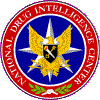|
|
Title:New Hampshire Drug Threat Assessment Update |
|
|
|
|
This report is a brief update to the New Hampshire Drug Threat Assessment, which is a strategic assessment of the status and outlook of the drug threat to New Hampshire. Analytical judgment determined the threat posed by each drug type or category, taking into account the most current quantitative and qualitative information on availability, demand, production or cultivation, transportation, and distribution, as well as the effects of a particular drug on abusers and society as a whole. While NDIC sought to incorporate the latest available information, a time lag often exists between collection and publication of data. NDIC anticipates that this update will be useful to policymakers, law enforcement personnel, and treatment providers at the federal, state, and local levels. The New Hampshire Drug Threat Assessment was produced in May 2001 and is available on NDIC's web site www.usdoj.gov/ndic or by contacting the NDIC dissemination line at 814-532-4541. Your questions, comments, and suggestions for future
subjects are welcome at any time. Addresses are
provided at the end of the page. |

 Publication Date: April
2002
Publication Date: April
2002